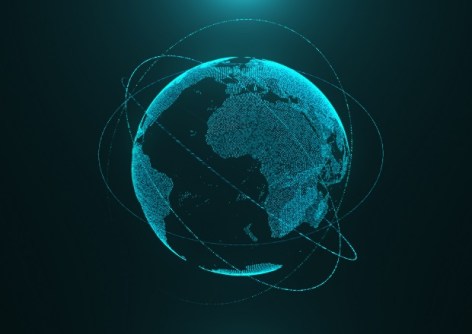
Weaknesses in the global geodesy supply chain are leaving the world vulnerable to catastrophic failures of critical infrastructure and adverse economic impacts, according to a new report from the United Nations Global Geodetic Centre of Excellence (UN-GGCE).
The vulnerability of the world’s mostly satellite-based positioning, navigation and timing (PNT) ecosystem is well known, but the weakness of the fundamental measurements underpinning it are less well appreciated.
According to the report, PNT, communications and Earth observation satellites require two things: knowledge of the satellites’ exact place in space at every moment, and continually updated knowledge of the Earth’s shape, orientation, gravity field and coordinate reference frame. Collectively, these are known as ‘geodetic products’.
Those geodetic products are produced by the global geodesy supply chain, which involves:
- continuous observation of the movement of the Earth and satellites, accomplished by ground-based observatories and the scientists and technicians who operate them;
- data centres and data centre operators who quality check the data from observatories and make it available to the global geodesy analysis community; and,
- analysis centres, correlation centres and analysts who translate the raw data into geodetic products.
This supply chain is becoming more vulnerable as each year passes, due to a number of factors.
The first is that decision makers in government are largely unaware of the world’s heavy reliance on geodesy, due to a lack of readily understandable and accessible information on why geodesy is so important.
Another factor is that around half of all ground observation stations are no longer productive due to age or lack of operational funding. Added to that is the fact that “data collection from ground stations observatories along with quality checking, analysis and development of geodetic products is reliant on in-kind contribution and is done on a best-effort basis,” says the UN-GGCE.
On the topic of funding, the UN-GGCE says that the funding “allocated to the operation of the global geodesy supply chain is estimated to be between €60-90 million per year worldwide, which is less than 0.05% of revenue generated from GNSS and EO services”.
One clear weakness is that the global geodesy sector does not have an international governance body, such as meteorology does with the World Meteorological Organisation. If such a body were to be formed, it would be able to ensure that “the global geodesy supply chain meets Member State requirements, including the provision of accurate and reliable geodetic products critical to people’s lives,” the UN-GGCE says.
Added to that is the decline in the number of geodetic professionals in many parts of the world, due to fewer geodesy training opportunities within the tertiary sector, and a general lack of awareness of career opportunities.
Finally, the UN-GGCE says that even the sectors that are reliant on geodesy and satellite-based PNT, are unaware of the extent of the global geodesy supply chain and it’s vulnerabilities.
To combat these problems, UN member states and partners are working on a Joint Development Plan, to be released in August 2024, which will show how they might “work together to strengthen the supply chain to enhance the reliability and integrity of the geodetic products”.
Actions that could be taken include:
- establishing a geodesy working group to assess the risks in the supply chain, translate those risks into evidence with which to influence decision makers, and develop mitigation strategies;
- officially recognising the supply chain as ‘critical national infrastructure’ and resourcing it appropriately;
- developing outreach programs to make geodesy more visible and understandable to society;
- haring data and knowledge, and building capacity;
- developing formal bilateral or multilateral agreements to address gaps in the supply chain; and,
- investigating options for foreign aid investment to support the supply chain in other countries.
In the following video, Nicholas Brown, UN-GGCE Head of Office, explains in detail the findings of the report and the steps that can be taken to bolster the global geodesy supply chain.







